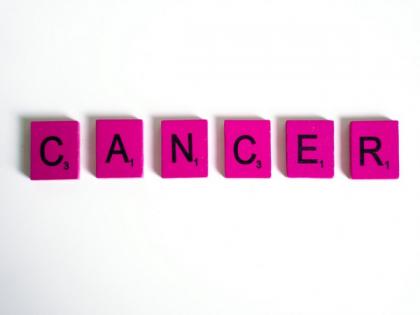Research: Fibroblasts connected to cancer increase drug sensitivity
By ANI | Published: August 21, 2022 08:07 PM2022-08-21T20:07:31+5:302022-08-21T20:15:02+5:30
Despite some studies suggesting that these fibroblasts may also make cancer cells more sensitive to therapy, cancer-associated fibroblasts in the tumour environment have typically been linked to tumour progression and resistance to therapy.

Research: Fibroblasts connected to cancer increase drug sensitivity
Despite some studies suggesting that these fibroblasts may also make cancer cells more sensitive to therapy, cancer-associated fibroblasts in the tumour environment have typically been linked to tumour progression and resistance to therapy.
Researchers from the Moffitt Cancer Center clarified these conflicting studies in a recent article published in Science Signaling and showed that cancer-associated fibroblasts can promote or inhibit drug sensitivity depending on the kind of tumour cell and the drug being used for treatment.
The research team identified the influence of cancer-associated fibroblasts on drug responses among various non-small cell lung cancer cell lines through a series of laboratory experiments. They discovered that depending on the type of non-small cell lung cancer and the medication used for treatment, the presence of cancer-associated fibroblasts had different effects on tumour cells.
For instance, non-small cell lung cancer cell lines with a mutant KRAS protein became resistant to two different MEK inhibitors when cancer-associated fibroblasts were present. Cancer-associated fibroblasts, on the other hand, made mutant EGFR-positive non-small cell lung cancer cell lines more sensitive to EGFR inhibitors. Strangely, healthy lung-associated fibroblasts never made cells more sensitive to drug treatment, indicating that cancer-associated fibroblasts secrete a substance that alters how cells respond to drugs in a cell-specific manner.
In order to pinpoint the variables causing these dissimilar effects, the researchers compared normal fibroblasts to cancer-associated fibroblasts. They discovered that the levels of secreted proteins that are a component of the insulin-like growth factor (IGF) signalling pathway, which is involved in cell growth, death, and migration, were altered in cancer-associated fibroblasts. Particularly, IGF binding proteins (IGFBPs), which block IGF signalling, were secreted in higher amounts by cancer-associated fibroblasts while IGFs, which activate IGF signalling, were present in lower amounts. These changes act as an inhibitory force on the IGF signalling pathway when combined.
Further research revealed that IGF proteins led to resistance to EGFR inhibitor treatment while IGFBPs sensitised lung cancer cell lines to EGFR inhibitor treatment. They discovered that the proteins IGF1R and FAK, which are both components of the IGFBP signalling pathway, were necessary for survival signalling in response to EGFR inhibitor treatment. Importantly, they found that medications that inhibited IGF1R and FAK activity made mutant EGFR lung cancer cells more susceptible to EGFR inhibitors, indicating that this combination approach may work in the clinic.
According to lead study author Lily Remsing Rix, PhD, a research scientist at Moffitt, "these results highlight tumour suppressive effects competing with otherwise tumour-promoting effects of cancer-associated fibroblasts and add to the growing evidence that eliminating cancer-associated fibroblasts in a non-differentiated manner may be detrimental to cancer therapy."
The study's principal investigator, Uwe Rix, PhD, an associate member of the Department of Drug Discovery at Moffitt, said, "We demonstrate that mechanistic understanding not only of cancer-associated fibroblast-mediated resistance but also of their tumour suppressive pathways, can lead to the rational design of improved therapeutic approaches that mimic these effects and may delay the onset of drug resistance.
( With inputs from ANI )
Disclaimer: This post has been auto-published from an agency feed without any modifications to the text and has not been reviewed by an editor
Open in app